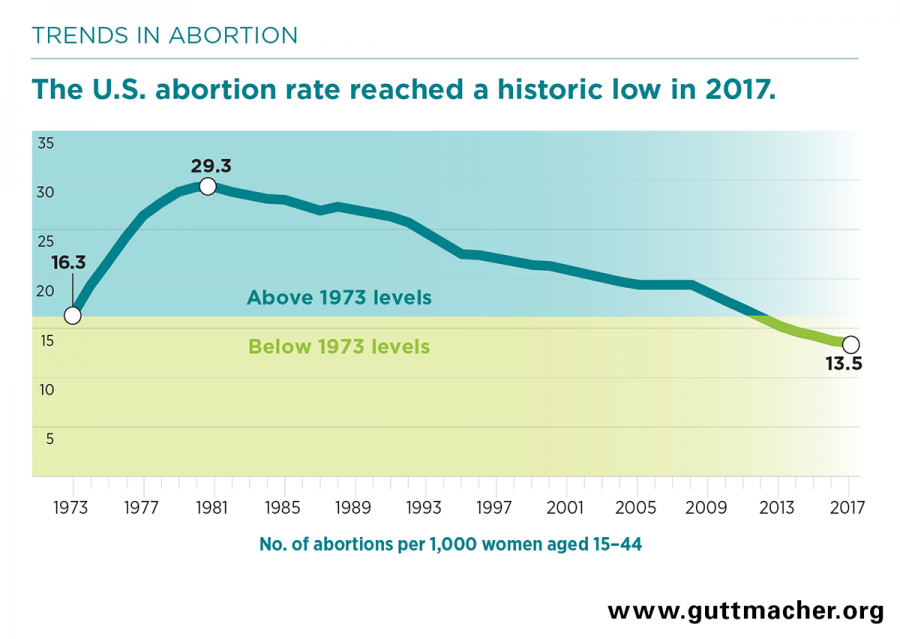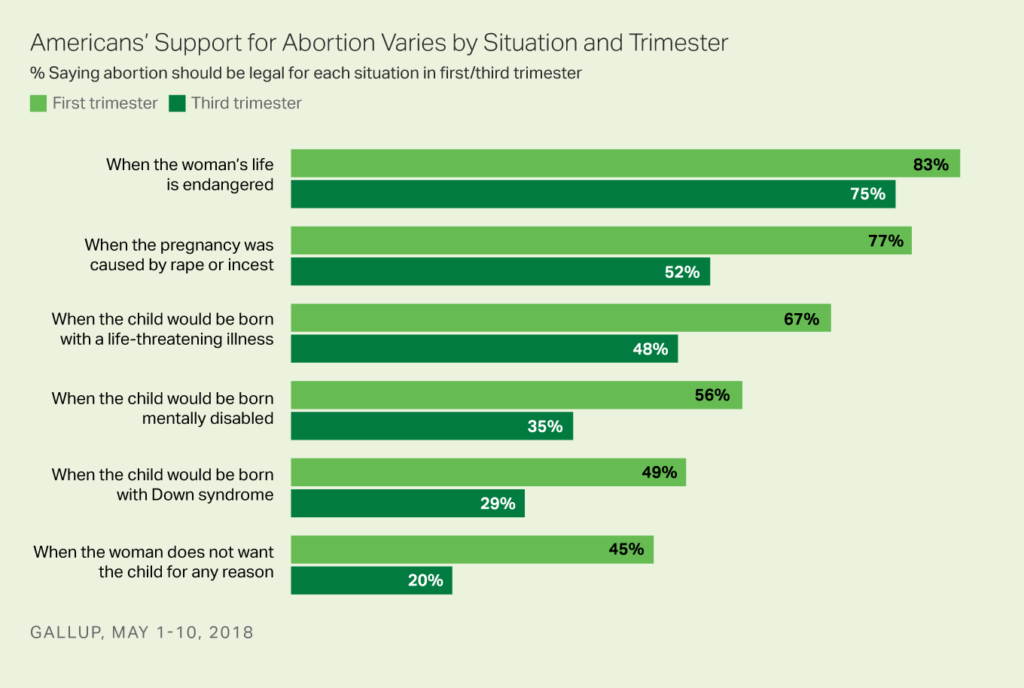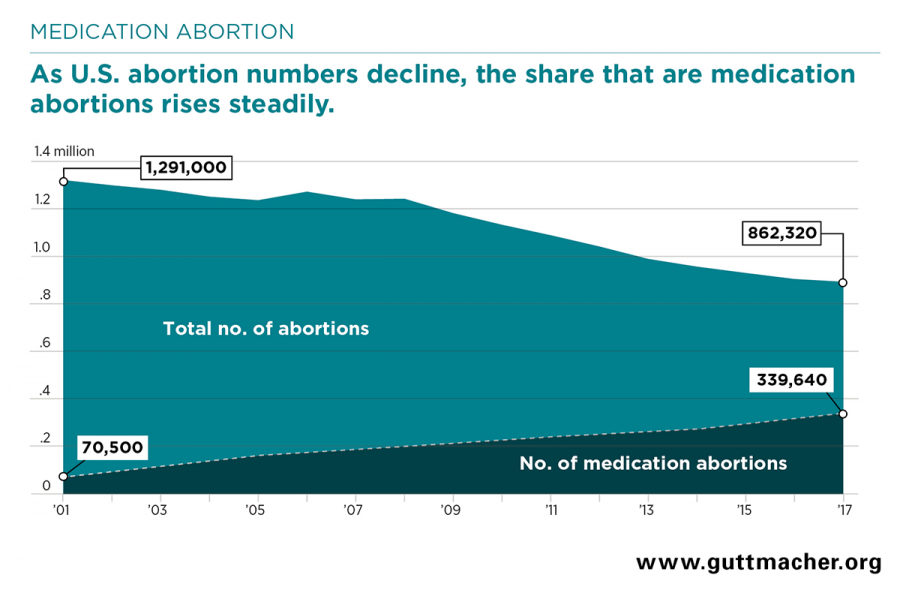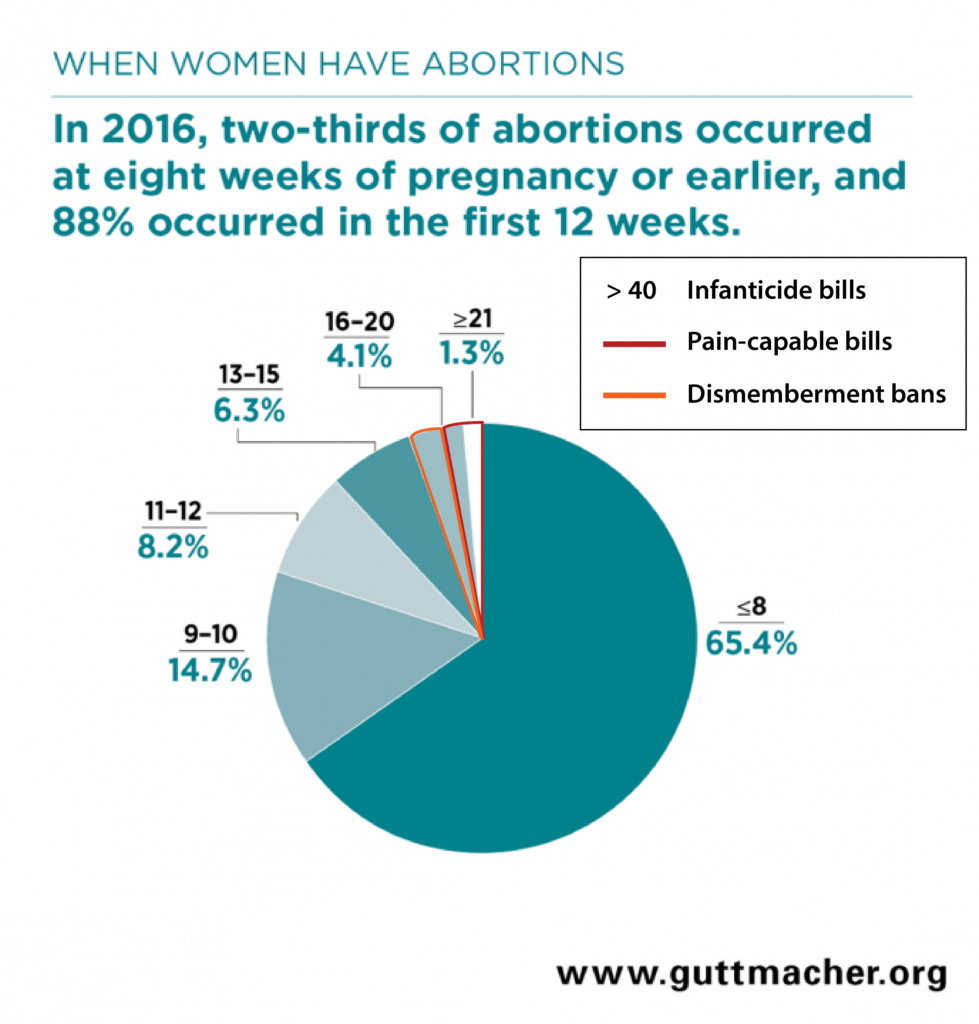By Sarah Quale, originally pubished on personhood.org
Now that the celebrations surrounding the latest Guttmacher abortion report have settled down, it’s time to look past the rhetoric on both sides and uncover what’s really going on. May this discovery be a wake-up call for you and I to begin to proactively address the realities on the ground.
By now, almost every pro-life organization in America has weighed in on the Guttmacher Institute’s latest Abortion Incidence and Service Availability Report, which examined abortion trends and rates from 2014–2017. The report indicated that 862,320 pre-born children were killed by elective abortion in 2017, a 7% drop from 2014. The abortion rate declined by 8% over the same period, to 13.5 abortions per 1,000 women aged 15–44. This rate is the lowest recorded since abortion legalization was mandated by the U.S. Supreme Court in 1973.

Pro-life organizations pointed to abortion restrictions and the public’s increasing rejection of abortion as the key drivers for these declines, while pro-abortion organizations lauded increased use of birth control as a major factor. But do the data back up these claims on either side? Let’s look beyond the headlines and consider the questions every pro-lifer should ask about this report:
- Are these declines the result of abortion restrictions?
- Are the declines the result of clinic closures?
- Is this happening because more women are choosing life?
- Could birth control really have this much of an impact?
- Is America becoming more pro-life?
- What trends are the data showing us, and how are we addressing them?
It’s time to dig in.
Watch the Guttmacher Report Deep Dive on the Personhood Podcast for a discussion of the in-depth analysis presented in this article. Stream the audio and subscribe to our podcast here.
The effect of abortion restrictions
In their 2017 report, Guttmacher Institute researchers make two bold claims about the decline in the abortion rate:
1/ “There is no clear pattern linking abortion restrictions to changes in the abortion rate.”
2/ “There is no clear link, even indirectly, from new abortion restrictions to clinic closures to decreases in abortion rates.”
Researchers made these same claims about abortion restrictions in their 2011 and 2014 reports, even though a record number of state-level restrictions were put in place after Republicans’ midterm sweep in 2010 (which would have had a direct impact on the time period measured in the 2014 report). Does this mean that all the tenuous work on abortion restrictions and regulations across the country, particularly within the last decade, have had no significant bearing on actually reducing abortion?
Let’s look at the evidence.
Nearly every state had a lower abortion rate in 2017 than it had in 2011, regardless of whether abortion was restricted. 57% of the 2011–2017 decline in the number of abortions nationwide (so, two-reports worth) happened in the 18 states and the District of Columbia that did not adopt any new abortion restrictions. Some of these states, such as California and New York, even took major steps to increase abortion. Yet, their rates fell, too. What’s more, several states with newly passed restrictions, like Mississippi, actually had abortion rate increases.
These data directly contradict entire campaigns that pro-abortion advocates have put in place like #StoptheBans and #StoptheSham to equate abortion restrictions with limited access to the abortion procedure. In other words, the “war on women’s health,” is simply a political fundraiser.
So what about clinic closures? Those definitely reduce abortion, right?
The effect of clinic closures
While it’s true that a shuttered clinic limits the ability to gain local, physical access to abortion, especially when multiple clinics close (like in Texas) or a state is left with a single facility (like in Kentucky or West Virginia), the data tell an interesting story.
Among the 26 states and DC that lost abortion facilities between 2011 and 2017, 24 saw declines in their abortion rates. That seems to make sense. However, 13 of the 15 states that added clinics experienced declines in their abortion rates as well, as did eight of the nine states where the number of clinics stayed the same.
It’s important to call out that regulations specifically targeting abortion facilities and providers (known colloquially as TRAP laws) certainly had an impact on individual locations and produced slightly larger abortion rate reductions in some states. But Guttmacher researchers concluded that even those did not have any significant impact on the national decline.
The closure of any facility that kills pre-born children is definitely worthy of celebration, but we need to consider that, all across the country, Planned Parenthood continues to grab more and more of the abortion market share. In Minnesota, for example, abortion numbers have declined for 7 out of the last 10 years. But the percentage of Minnesota abortions performed at Planned Parenthood’s mega-facility in St. Paul have drastically increased—from 35% in 2010 to a record 63% in 2018. We will likely see more of this as Planned Parenthood continues to edge out smaller, independent clinics throughout the US.
So if abortion restrictions and clinic closures can’t account for these declines, what might be going on?
Other factors to consider
Here’s where things can get a bit more speculative, so it’s important to pull in other relevant data to try to draw reasonable conclusions. This requires us to ask some questions:
- Are there fewer abortions because more women are choosing life? We could potentially make this claim if births were increasing while abortions were dropping. But births are not increasing.
- Are the number of pregnancies declining, too? Yes. As indicates, the number of births and the birth rate continue to decline in the US. Coupled with the decline in abortions, we can conclude that fewer women are getting pregnant.
Is this the result of birth control? Interestingly, in an analysis of methods used between 2008 and 2014, there was no significant change in the proportion of women who used a birth control method, even among the highest risk for unintended pregnancy, though use of long-acting methods like IUDs did increase somewhat. Of the women who had abortions, 51% said they were using a birth control method in the month they became pregnant. This is a stable trend that has been revealed in several Guttmacher reports over the last two decades. - What about abortions from emergency contraception? The pro-abortion movement classifies emergency contraception as a birth control method, not an abortifacient, even though drugs like Plan B and Ella can cause an early abortion if fertilization has already occurred by preventing the embryo from implanting into the uterus. Abortion advocacy organizations like the American College of Obstetricians and Gynecologists have redefined pregnancy as beginning at implantation, not fertilization, so the abortifacient potential of these drugs isn’t adequately studied and therefore, they aren’t even considered in the Guttmacher report. These drugs are readily available at pharmacies across America and their use over the last two decades has skyrocketed.
- What about society’s view of children? Unfortunately, history tells a disturbing story. The average number of children per woman dropped from from 3.8 in 1957 to 1.7 in 1977. Though this average has risen slightly since then, the U.S. population has been under replacement value for the last 10 years. In addition, two of three indicators used to measure fertility rates show that fertility in the US is at an all-time low.
- Are more people rejecting abortion and becoming pro-life? Public opinion on abortion has remained surprisingly stable over time, split fairly even between pro-life and pro-choice, as evidenced by both Pew Research and Gallup polling. Notably, both these major polls showed no significant changes in attitudes on abortion between 2011 and 2017—the timeframe of the two most recent Guttmacher reports.
We tackle these issues head-on in our Guttmacher Report Deep Dive episode on the Personhood Podcast. Subscribe here.
The real litmus test
It’s important to look beyond the self-labeling when it comes to Americans’ viewpoints on abortion. Gallup polling helps us do that, but it uncovers a shocking reality:
- Of adults under 30, 70% say abortion should be legal in all or most circumstances. Even when we look at labels, the percentage of this young demographic who claim to be pro-life has plummeted almost 20 points just in the last 2 years. What happened to the pro-life generation we’ve been hearing so much about?
- In general, Americans’ support for abortion depends heavily on the reason, and that support declines dramatically from the first to the third trimester.
In other words, moral relativism—not principles or consistent values—guides Americans’ view of abortion. The chart below speaks for itself.

77% of Americans polled say we should kill children conceived in rape and incest in the first trimester. 56% say we should kill a mentally disabled child. Almost half of participants agree that a woman should be able to get an abortion for any reason at all in the first 12 weeks of pregnancy.
Let’s add some context here.
Earlier this year, almost all conservative news outlets and national pro-life organizations publicly celebrated the most recent Marist poll, which revealed that 75% of respondents want abortion limited to the first trimester; 6 in 10 agreed it should be restricted after 20 weeks, except for the widely misunderstood “life of the mother” caveat. Just in time for the Democrat primary debates in June, March for Life Action launched a six-figure advertising campaign to champion the poll, calling the results “the American consensus” on abortion.
Why in the world would we celebrate this?
Let’s add some more context.

Abortions in the first trimester—when 75% of Americans want them to stay legal—are rising steadily. Chemical abortions (through RU-486, or the abortion pill) make up 39% of the total abortions performed. Of total abortions performed, 88% happen in the first 12 weeks; of that 88%, almost half are done via the abortion pill.
Again, why would we celebrate that three-fourths of Americans want 88% of abortions to remain legal, especially when abortions are being increasingly concentrated in the first trimester?
Where are we headed?
First trimester abortions will continue to increase for several reasons. And all of these reasons actually are a direct response to abortion restrictions and the threat of a “post-Roe” America where states get their own say on when it’s okay to kill children in the womb:
- The abortion industry has been working to expand webcam abortions for wider distribution of the abortion pill for over a decade now.
- More and more pharmaceutical companies are making the abortion pill available to women online (which is currently illegal in America) so they can “self-manage” their abortions, which is what do-it-yourself abortions are now formally called by the abortion industry.
- The DIY abortion movement was openly acknowledged in the Guttmacher report, along with an admission that the decline in abortions may be considerably less than the current data show, because of the inability to adequately track self-managed abortions. Researchers found that 12% of abortion facilities overall reported that they treated complications of self-managed abortions. This was as high as 21% of facilities in the South.
- There are now websites, legal firms, campaigns, and even whole books dedicated to instructing women in DIY abortions.
- Efforts are already underway by abortion activists, the ACLU, the American Medical Association, and the American College of Obstetricians and Gynecologists to lift FDA restrictions on selling the abortion pill at pharmacies, online, and through the mail.
So what is the national pro-life movement doing politically to address these trends?
Unfortunately, the answer is nothing at all.
The following chart is a sobering reminder of what Republican politicians and many national pro-life leaders continue to focus on, while also actively working against practical, principled efforts to end all abortions.

After almost 50 years of abortion on demand, shouldn’t we be further along?
It’s time to seriously reconsider our pro-life strategies and honestly examine the efficacy of the national pro-life movement.
The personhood movement is calling the grassroots forward to restore the fundamental principles at the foundation of the pro-life movement, to take action at the local and state levels to protect all human beings equally, without exception, and to engage churches and communities in the real, sacrificial work of changing hearts and minds, one person at a time.
To join this rapidly growing movement of practical, biblical pro-life activism and outreach, use our interactive map to find your Personhood Alliance state affiliate or learn how to start one.
We’re looking for people who are looking for us.
Sarah Quale is president of Personhood Alliance Education, the educational arm of the Personhood Alliance, and the author of the Foundations online pro-life curriculum. She is a member of the International Christian Visual Media Association and Christian Women in Media and is the founder of Educe® online learning.









